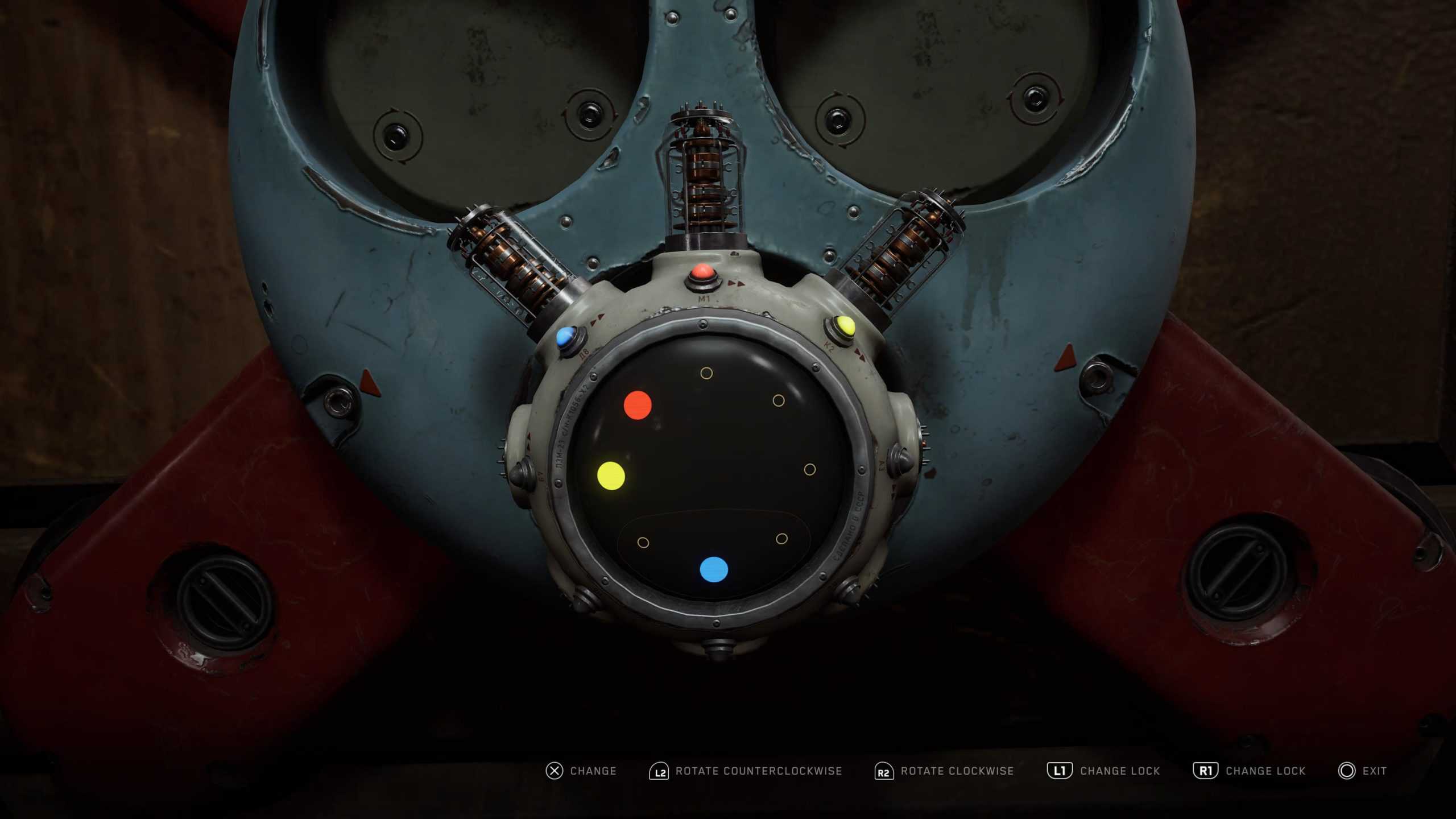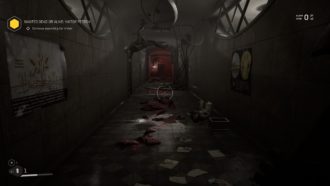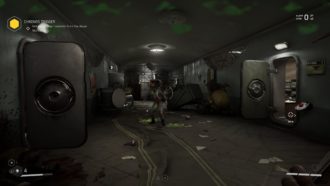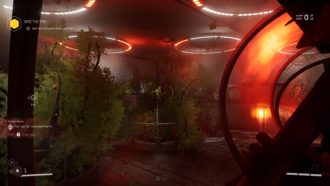Platforms:
Xbox One, PS4, PC, PS5, Xbox Series X|S
Released:
February 21, 2023
Publisher:
Focus Entertainment
Developer:
Mundfish
Atomic Heart, developer Mundfish’s first major title, is a sci-fi FPS-RPG taking place in an alternate Soviet Union. It’s a valiant debut effort, featuring a compelling cast and setting and gorgeous aesthetics and music. Although some technical and pacing issues do hold the game back at many points, fans of Bioshock and Prey (2017) will really get immersed in what Atomic Heart is offering.
It is the 1950s in the USSR. In this version of reality, the Soviet Union has entered into a technological golden age, with an army of domestic robots serving humanity’s needs, and scientific advancements providing flying cities and an advanced space program. This utopia is torn apart when all of the domestic robots suddenly turn on their masters, bringing the Soviet Union to its knees. You play as P-3, a taciturn soldier and government agent caught in the middle of the mayhem, who must investigate the cause of the catastrophe and hopefully restore order.
I found the setting of this alt-universe retro-futuristic Soviet Union quite interesting and well-developed. As you explore the various laboratories, you gain insight into the nation’s plans for the future, showing both the regime’s utopic ambitions, and the human flaws and infighting that are bringing it down. P-3 himself ends up being a rather engaging protagonist as his past is revealed, and banter with his talking AI sidekick Charles providing much of the game’s levity.
“…creepy doll-like robots’ combination of jerky, yet occasionally graceful motions and frozen faces make a perfect landing deep into the uncanny valley.”
Atomic Heart is quite a visually striking game at times. The game’s creepy doll-like robots’ combination of jerky, yet occasionally graceful motions and frozen faces make a perfect landing deep into the uncanny valley. The pristine, grey laboratories and sculpted lawns incorporate the stale Soviet ideal of order, while the occasional audio logs and notes from deceased humans giving depth and character to the world before it went to hell. Despite its good looks, Atomic Heart didn’t always run the best; many areas have frame rate issues, and even late in the game crashes were not uncommon. Hopefully these issues will be ironed out with patches.
The English dub can be a bit awkward at times, with P-3’s catchphrase of “Crispy critters!” presumably translating to something less odd-sounding in Russian. For those seeking a more authentic experience, however, the option is always there to play with the Russian audio and English subtitles.
As far as the gameplay goes, fans of Bioshock will feel right at home with Atomic Heart, with some caveats. Like Bioshock, you spend much of your time crawling around enclosed, claustrophobic areas hiding, or occasionally fighting enemies and scrounging for resources, key items and information. Unlike Bioshock, there is also quite a big emphasis on crafting, with every piece of metal, polymer and biological material being usable for item creation and weapon upgrades. Throughout the game, you alternate between exploring subterranean Soviet laboratories to progress your quest, find new crafting blueprints, and roam the overworld finding new locations. Whether above or below ground, you can also count on being chased by an army of robots and mutants.
You start off on the back foot in Atomic Heart, with few combat abilities, scarce ammo and hordes of enemies that can take a beating before they go down. While things eventually get to something of a more even footing as P-3 unlocks more upgrades and crafts a bigger arsenal, enemies still feel way too durable, with myriad infinite enemy spawners and robots that can revive other robots dragging out combat encounters a lot longer than necessary. This is exacerbated by many foes, including one annoying and recurring mini-boss enemy who is able to knock P-3 off his feet with many attacks, ruining the flow and often locking the player into an endless loop of getting knocked down over and over before they can adequately recover.
Minor gripes about the enemies aside, I quite enjoyed the extent to which you could customise P-3. You have multiple different polymer upgrades, which let you fire ice or lightning at enemies or lift them up with telekinesis. You can freely re-spec at any point too, which freed me up to play around with different abilities without ruining my playthrough. Your weapons also have many different upgrades, improving speed, power and adding additional abilities – if you can find the blueprints, at least.

The main issue with Atomic Heart’s pacing is the prevalence of, as P-3 memorably complains at one point, “annoying bullshit”, particularly in the first few hours. Plot revelations and main missions are dragged out interminably by random puzzles and locked doors, causing deceptively simple objectives like finding a scientist in a facility, to take far longer than you would expect due to all of the pointless busywork in the way.
One memorable early game area, after unlocking a door, led me into a new chamber where to unlock the next door, I had to find several different polymer cannisters from different areas of the facility. Although the acquisition of each cannister had different sub-objectives attached, ranging from cooling down some boilers to lighting a giant plant monster on fire, none of those diversions advanced the plot or P-3’s character development much at all, and frustrated me more than anything.
Fortunately, Atomic Heart does eventually become more focused, or at least incorporates more character and plot development into its frequent sidetracks. However, the early glacial pace made it hard to follow the narrative at times when the plot itself and P-3’s objective had barely developed for hours.
Although the game’s English dub can be a bit strange at times, I was a big fan of its music. In Atomic Heart’s depiction of a futuristic USSR, the game incorporates a mixture of iconic Russian classical melodies and more modern musical genres, explained in-universe as Soviet scientists scientifically predicting the music of the future back in 1955. It’s a remarkably distinct musical backdrop to frame some of the memorable encounters, and as a fan of alternate history media like The Man in the High Castle and the recent Wolfenstein games, I felt that it was a very nice touch.
7.5
Good
Positive:
- Well-developed alternate universe setting and intriguing mysteries to solve
- Evocative and suitably creepy robot and setting design
- Deep customisation and crafting system
- Gorgeous retro-futuristic soundtrack
Negative:
- Slightly awkward English dub
- Respawning and durable enemies drag out combat encounters
- Irritating fetch quests and locked doors bog down the pacing
- Somewhat prone to crashing at times
Atomic Heart is a compelling and exciting sci-fi action RPG, with a unique and well-developed setting. Although it has its imperfections, from its slow pace to occasionally annoying combat, the exciting mysteries at the heart of, well, Atomic Heart, made it worth powering through. For action-RPG fans with a taste for alternate history settings, Atomic Heart is definitely worth diving into, and I am excited to see what developer Mundfish has to offer in the future.











